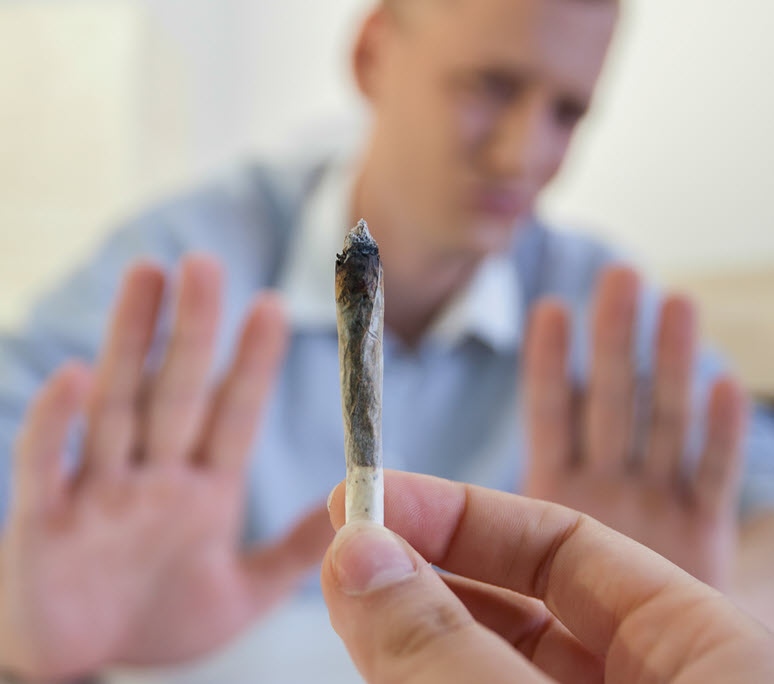
Kids in Colorado don’t like weed
The huge drop in cannabis use among youth in Colorado proves the kids are doing well
Colorado became the first state in the United States to legalize marijuana by passing Amendment 64 back in December 2014.
Two years later, state-licensed sales began and they welcomed marijuana tourism with open arms. Since then they have earned a reputation for being one of the most progressive states in the country and helped pave the way for a multi-billion dollar cannabis industry in the country. Then it would be easy to assume that even young children start using cannabis at an early age, right?
Well, for those who worry about teenage cannabis use and claim that legalized marijuana is making it all too easy for teens to access the drug, recent statistics prove otherwise.
Data from the Colorado Department of Public Health and Environment (CDHPE) showed that young people who admitted to using cannabis had a dramatic drop from 2020 to 2021, according to a report by Marijuana Moment. In fact, there was a 35% decrease in teens who reported cannabis use in the past 30 days, as well as a 22% decrease in teens who reported having easy access to the drug.
“These data are consistent with other surveys showing that marijuana regulatory policies can be implemented to allow adult access while restricting youth access and abuse,” said Paul Armetano, associate director of NORML. “These findings should reassure lawmakers and others that adult access to cannabis can be regulated in a way that does not unintentionally affect the habits of young people.”
Additionally, a survey conducted by researchers at the Colorado School of Public Health at the University of Colorado’s Anschutz Medical Campus found similar results: a 35% decrease in teenage marijuana use. The survey, dubbed the Healthy Kids Colorado Survey, reflected a decrease in actual use, perceived access and driving under the influence of alcohol.
“I’m excited to see that youth use is declining,” said Truman Bradley, executive director of the Marijuana Industry Group. “Thirteen point three percent of youth admitted to having used cannabis in the past 30 days, down from 20.6% in the previous survey. That’s a 35% drop. That’s a huge number,” he said.
There are numerous studies pointing this out and we cannot deny the facts.
Another larger 2019 study, published in JAMA Pediatrics, involved surveying over 1.4 million high school students. Researchers analyzed data from the 1993 and 2017 Youth Risk Behavior Surveys, then compared cannabis use rates in all states to teen use rates in states with legal marijuana policies — either recreational or legal.
They found that legalization has indeed helped curb teenage cannabis use once again.
“The overall finding from our research is that there is no evidence that the legalization of marijuana for medical or recreational purposes has led to increased use among teenagers,” said D. Mark Anderson, PhD, lead author and associate professor at the Institute of Agricultural Economics and Economics from Montana State University. “This is now one of a handful of studies that all conclude that there is no effect on teenage marijuana use,” he adds.
Anderson goes on to explain that while the researchers weren’t able to identify the exact reasons for the decline in cannabis use, they referred them to previous studies that suggest it makes it more difficult for teenagers to access marijuana from a post-prescription dispensary , rather than getting it off the black market before it was legalized.
Why cannabis regulation is crucial
Despite what many people think, it’s far too easy to say that marijuana legalization will become a major public health problem if you don’t do some proper research. The truth is that if we don’t legalize marijuana or misregulate it, children can easily access it through the black market.
Sure, there’s a risk with regulation—but no regulation makes the risk much worse. While states have different regulations and public policies, it’s up to state governments to implement the right programs to improve protections for youth while ensuring patients and adult recreational users continue to get what they need.
There are also studies showing that even recreational laws have been linked to a drop in teenage use.
Regulation is clearly reducing ease of supply as distributors have been replaced by legitimate pharmacies that would require identification and proof of age to purchase. For people selling to minors, it would result in a serious crime, making it a much riskier act. Additionally, when states regulate marijuana, they do so to allow adults to legally acquire it while preventing minors from accessing it.
Additionally, there is a chance that more parents will talk to their children about drug use as the place where they live begins to legalize drugs. Children are becoming more aware of the harms of early use, and this can also lead to more scrutiny from children and parents. These discussions may not have been had if the drug is not regulated because parents do not see an immediate need for it.
When teenagers reach adulthood and can legally access marijuana, it is much safer for them than alcohol and other illegal substances. Cannabis legalization has been linked to a drop in drunk driving, opioid addiction rates, violent crime and more – all showing that society as a whole could actually benefit.
Conclusion
The studies all point to the same facts: Regulating marijuana will help us ensure that children are doing well.
MORE CANNABIS FALSE CLAIMS, READ THIS…

DEA CLAIMS TEEN SUICIDE RATES ARE RISING WITH CANNABIS, NO DATA SUPPORTS THIS!

Post a comment: